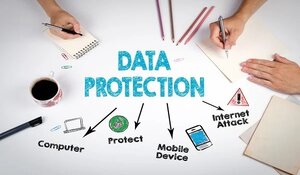Enforcing The Human Firewall: The Key to Preventing Cyber Attacks
While firewalls, antivirus software, and intrusion detection systems serve as essential security layers, human error remains the weakest link in...

Managing endpoint security can feel like a constant uphill battle. Keeping up with the latest threats, ensuring all devices are patched and protected, and educating employees about security best practices are just a few of the challenges IT professionals face. The complexity only increases with the rise of remote work and the use of personal devices on company networks.
| TABLE OF CONTENT |
This blog post will delve into practical strategies and solutions, including DriveLock's comprehensive suite of tools, to make endpoint security easier and more effective, allowing you to focus on your core business objectives without the constant worry of security breaches.
An endpoint can be any device that is able to connect to your network. Common examples include desktop computers, laptops, smartphones and tablets.
Cyber attacks target the vulnerable points of your business. This often comes in the form of employees utilising their personal devices, unaware of their vulnerability and what an attack might look like. It could be something as simple as an employee visiting the wrong site and clicking on an email they should not have. But don't let this simple mistake cost you. While the device of an employee is small in comparison, it allows attackers a foothold into your company's network. From here, your customer's data, login credentials and other sensitive information can be collected in order to spread their attack onto your system. Without taking precautions to install effective Endpoint Security Protection for your business, you will risk the loss of sensitive data as well as financial and reputation damage.
The 2017 Cylance Threat Report outlined that ransomware incidents tripled in 2017, with the healthcare industry being most affected. Up to 70% of the attacks exploited known vulnerabilities and these were sourced from email phishing and drive-by downloads.
Endpoint Protection is crucial in light of the heavy integration of digital devices into our lives. This, along with the reliance on external storage creates a wider risk parametre for businesses today which becomes increasingly difficult to manage. With a great number of endpoint devices being connected to your company's network at any given moment, a greater level of protection is necessary.
According to an ARN article, Australian businesses spend an average of $166,000 to recover from a major cyber attack. During the past 12 months alone, 67% of Australian organisations were impacted by cybersecurity threats.
“This means updating endpoint security solutions and hiring and rewarding the best and brightest security professionals who manage endpoint protection, detection and remediation solutions” - Malwarebytes.
Smartphones have an increasing amount of memory . If you connect smartphones to the computer then company files can easily be transferred onto the device.
USB sticks are also a common carrier of malware. When this USB is attached to the company computer, then the computer will become infected as well.
With DriveLock's Device Control, only authorised devices by authorised users are allowed access and copy company data. One of the most important aspects of this process is user and employee awareness. And DriveLock offers training for your employees on how to safely handle data and external devices.
2. DriveLock Application Control
Application Control works in a similar manner to Device Control, but with application control. This means Whitelisting apps to assess possible risks arising from utilising the app. Once it is approved, then the application is able to run on your computer system. The Australian Cyber Security Centre promotes Application Whitelisting as one of the most effective strategies to ensure a secure system. Application Control also prevents zero-day-attacks (a brand new form of attack which has yet to be safeguarded by antivirus software). This means that any unknown malware will be automatically blocked.
3. Analytics and Forensics
DriveLock also offers this monitoring system as an overview for you to be able to trace and track how security breaches occur. While competitors provide only a summary report, DriveLock details which computer, which user and which app was breached. Investigations into these incidents are automated so that you can receive the results within minutes.
Disk and file encryption, as well as data loss prevention, offer another layer of protection for your data. DriveLock's holistic multilayer concept focuses on protecting customer data so that only authorised users are able to access this information. As businesses have varying structures, DriveLock understands that a tailored service and plan is required for your business.
Humans are the weakest link in cybersecurity. In order to effectively implement Endpoint Security Protection, proactive insider risk mitigation strategies need to be put in place. Negligent and unaware employees post significant threats. Employee security training will be essential to combating this and DriveLock's Smart SecurityEducation will provide you and your business with the right strategies to create a security awareness culture in your company.
Managing endpoint security doesn't have to be a burden. DriveLock simplifies the process with centralized management, automated tasks, and user-friendly tools. Focus on what matters most – your business – and let DriveLock take care of your endpoint security. Request a demo today and experience the difference.

While firewalls, antivirus software, and intrusion detection systems serve as essential security layers, human error remains the weakest link in...

Enter the concept of "Zero Trust" in cybersecurity. It's not just a buzzword; it's a paradigm shift. Zero Trust challenges conventional wisdom and...

In today's rapidly evolving digital landscape, endpoint security stands as the frontline defense against a myriad of cyber threats. As organizations...